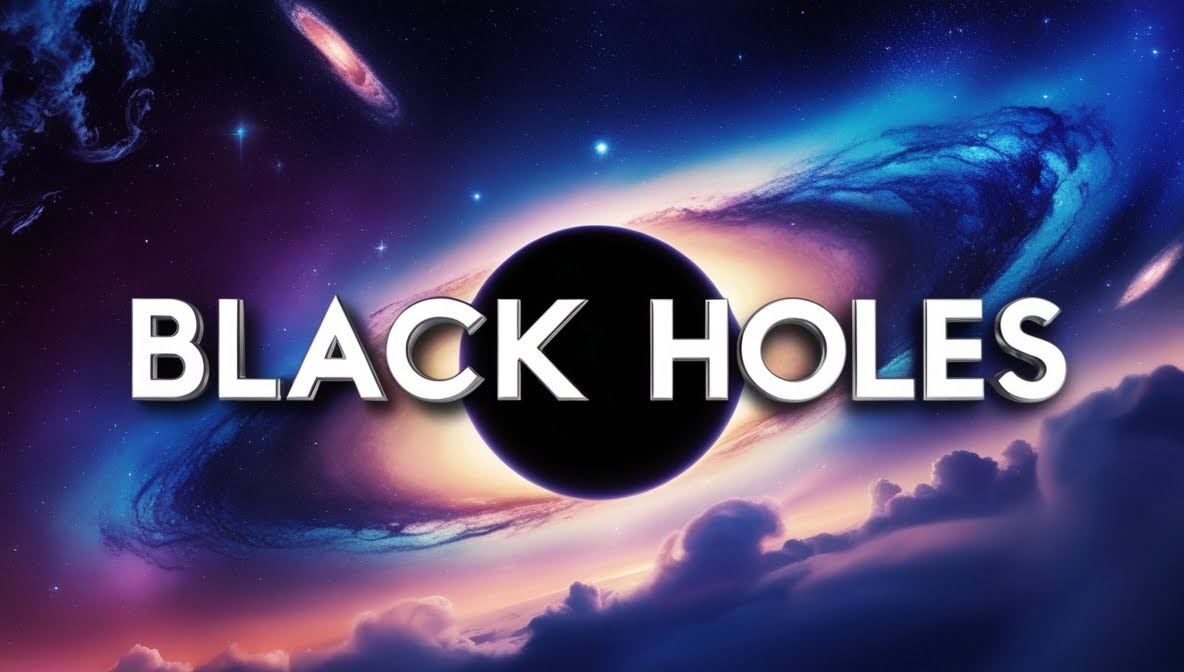Understanding black holes can feel like trying to comprehend a cosmic riddle wrapped in a mystery, all while floating in a vacuum. These enigmatic entities are not just the stuff of science fiction; they are real, fascinating phenomena that challenge our understanding of physics and the universe. So, let’s take a step into the abyss and unravel the mysteries of black holes together!
What Exactly Is a Black Hole?
At its core, a black hole is a region in space where the gravitational pull is so strong that nothing, not even light, can escape from it. This occurs when a massive star exhausts its nuclear fuel and collapses under its own gravity. Imagine a giant cosmic vacuum cleaner, but instead of cleaning up dust bunnies, it’s sucking in everything around it—stars, gas, and even light itself!
How Do Black Holes Form?
The formation of black holes typically follows the life cycle of a massive star. Here’s a simplified breakdown:
- Stellar Evolution: A star spends most of its life fusing hydrogen into helium in its core. This process generates energy that counteracts the force of gravity trying to collapse the star.
- Exhaustion of Fuel: Eventually, the star runs out of hydrogen. Without the pressure from nuclear fusion, gravity takes over, causing the star to collapse.
- Supernova Explosion: For stars larger than about three times the mass of our Sun, this collapse leads to a supernova explosion, blasting away the outer layers and leaving behind a core.
- Formation of a Black Hole: If the core’s mass is sufficient (typically more than three solar masses), it will continue to collapse into a singularity, forming a black hole.
What Are the Different Types of Black Holes?
Black holes come in various flavors, each with unique characteristics:
- Stellar Black Holes: Formed from the remnants of massive stars, these black holes typically have masses ranging from about 3 to several tens of solar masses.
- Supermassive Black Holes: Found at the centers of galaxies, including our Milky Way, these giants can have masses equivalent to millions or even billions of suns. Their formation is still a topic of research, but they may grow by merging with other black holes or accumulating mass from surrounding stars and gas.
- Intermediate Black Holes: These are the middle children of black holes, with masses between stellar and supermassive black holes. They are less understood and are thought to form in dense star clusters.
- Primordial Black Holes: Hypothetical black holes that could have formed shortly after the Big Bang. They might be tiny and could provide insights into the early universe.
What Happens If You Fall Into a Black Hole?
Falling into a black hole isn’t quite like a ride at an amusement park—more like a cosmic rollercoaster with no return ticket! As you approach the event horizon (the point of no return), you’d experience a phenomenon known as “spaghettification.” This is where the gravitational forces stretch you out, much like a piece of spaghetti, due to the difference in gravity between your feet and your head.But what if you could survive the initial plunge? Inside the event horizon, the laws of physics as we know them break down. Time and space behave in bizarre ways, and you’d be on a one-way trip to the singularity, where all the mass of the black hole is concentrated. Spoiler alert: it’s not a pleasant destination!
Can We See Black Holes?
You might be wondering, “If black holes don’t emit light, how do we know they exist?” Great question! While we can’t see black holes directly, scientists have developed clever methods to infer their presence:
- Gravitational Effects: By observing the motion of stars and gas around a seemingly empty region of space, astronomers can detect the gravitational influence of a black hole. For example, the stars orbiting the supermassive black hole at the center of our galaxy provide strong evidence of its existence.
- Accretion Disks: When matter falls into a black hole, it forms a swirling disk around it, heating up and emitting X-rays. Telescopes like the Chandra X-ray Observatory can detect these high-energy emissions, giving us clues about black holes.
- Gravitational Waves: The collision and merger of black holes produce ripples in spacetime known as gravitational waves. Detectors like LIGO have captured these waves, providing direct evidence of black hole mergers.
Can Black Holes Help Us Understand Dark Matter and Dark Energy?
Black holes may also play a role in understanding dark matter and dark energy, two of the most mysterious components of our universe. While dark matter is thought to make up about 27% of the universe, and dark energy accounts for about 68%, black holes could provide insights into their properties and interactions.
The study of black holes is a rapidly evolving field, and there’s still so much we have yet to discover. With the recent breakthrough of the Event Horizon Telescope, which captured the first-ever image of a black hole, we’re entering a new era of black hole exploration. Scientists are excited to learn more about the strange phenomena that occur near these cosmic powerhouses, like the intense gravitational lensing and the mysterious jets of energy that can shoot out from the poles.
Who knows what other secrets the universe has in store for us when it comes to black holes? Maybe one day we’ll even figure out how to harness the immense power of black holes for our own purposes. For now, we can just sit back, gaze up at the night sky, and let our imaginations run wild. After all, the mysteries of the cosmos are meant to be puzzled over and explored, one black hole at a time.






